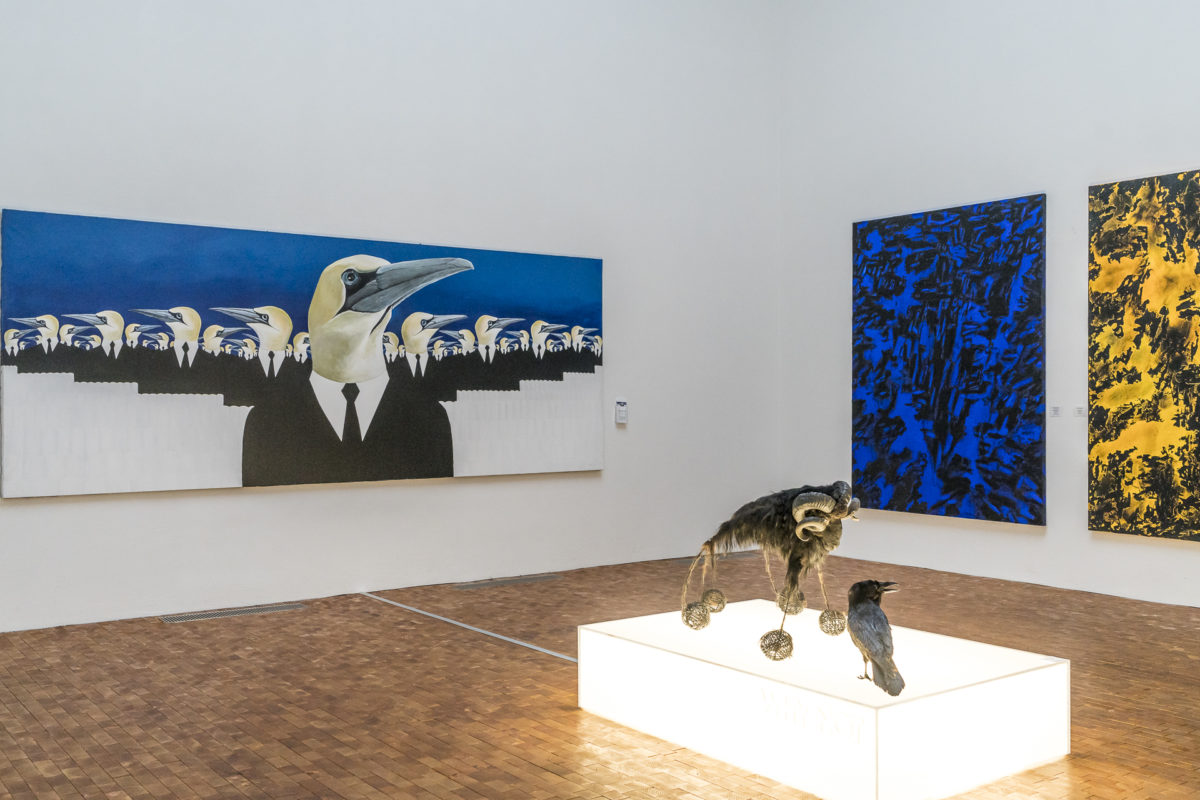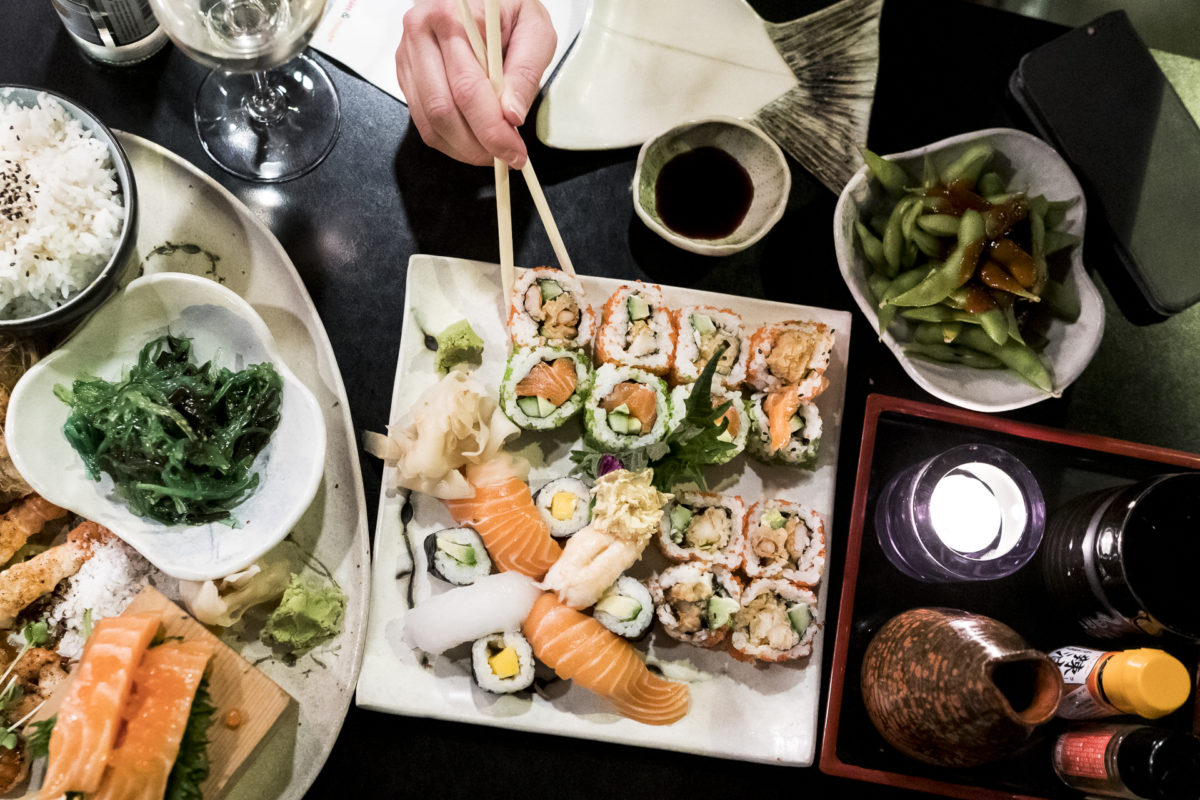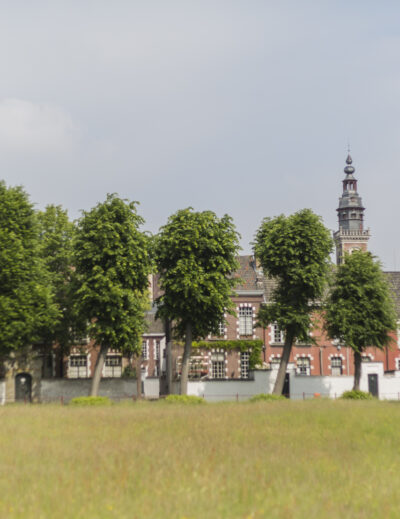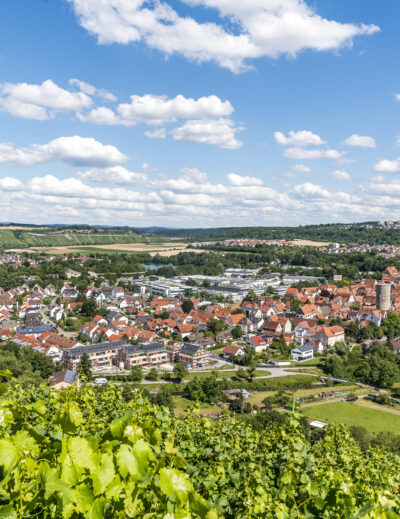
The Faroe Islands in winter: sights & tips
The Faroe Islands have made it onto the travel radar of outdoor enthusiasts recently. Due to their exposed location in the North Atlantic, the main travel season is concentrated in the summer months.
Contrary to the trend, we spent a total of seven winter days on the Faroe Islands over the New Year. During the winter months, still only a few tourists venture into this corner of the North Atlantic, battered by wind and rain. But that’s precisely why we chose this time to travel.
Travel destination Faroe Islands in winter.
No point of the Faroe Islands is more than five kilometers from the sea. The pace for the island climate is set by the sea, and thus also by the Gulf Stream. This ensures that, despite the northern latitude, temperature fluctuations on the Faroe Islands are surprisingly low. In the winter months, the weather is on average milder than in Central Europe. While the average temperature in the summer months is around 11 °C, it rarely falls below 3 °C in the winter months. It can snow on the Faroe Islands – but due to the changeable winds, the snow never lasts long. In both summer and winter, it rains a lot, and in both seasons, the weather can change in seconds.
Those who do not shy away from the harsh climate and short days can also consider the islands as a potential travel destination in winter. During our stay at the end of January / beginning of December, we had about 5 hours of daylight (sunrise before 10 a.m. and sunset after 3:00 p.m.). The twilight lasts significantly longer than in our country – and with a bit of luck with the weather, one can enjoy beautiful deep photo light all day long.


7 Days Faroe Islands in winter: Trip Overview
We traveled from Zurich via Copenhagen to the Faroe Islands. There are no direct flights from Switzerland. The Vagar Airport on the island of the same name is served by the national airline Atlantic Airways and by Scandinavian Airlines (SAS). There is a rumor that Atlantic Airways has less trouble with the sometimes severe winds and shows better performance. I did not investigate this in detail. From the Zurich perspective, SAS is more practical since both flights can be booked as one (Atlantic does not have ZRH code share partners – therefore, you have to buy two separate tickets, and the luggage is not checked through). For us, both the outbound and return flights worked on the first attempt.
For the seven days on the Faroe Islands, we rented a car from Avis. I chose Avis because I was able to get a car with an automatic transmission directly online (without a request). Since I haven’t driven a manual transmission lately, I have a quirk about this. Those who are not dependent on automatic transmission will probably find cheaper alternatives to Avis at the local company 62°N.
We opted for central accommodation in the capital Torshavn and spent six nights at the recommended Havgrim Seaside Hotel 1948 (partner links). Since the distances between the islands should not be underestimated, I would tend to change the location two or three times next time. It should be noted that in the low season (winter months) many cafés and restaurants in smaller towns remain closed and there are only choices in Torshavn and Klaksvik.
Since the days are short at the end of December, we did less during our seven days on-site than if we had made the same trip in midsummer. Of the total 18 islands of the archipelago, we focused on the four islands connected by tunnels and bridges: Vagar, Streymoy, Eysturoy, and Bordoy. We originally planned a detour to Kalsoy – in the end, we omitted it because we were not sure whether the hike to the Kallur Lighthouse is still “legal” without a guide (and the guided hikes are only bookable in the summer months). Another main attraction of the Faroe Islands – the island of Mykines – is also not accessible in the winter months.
Overall, the weather was just as mixed as we had expected. One out of seven days was sunny. The remaining six days offered us the full weather spectrum, from hurricane gusts and torrential rainfalls to a steady interplay of showers and clouds.
The highlights of Vagar
We used the first full day on the Faroe Islands to explore the third largest islands of Vágar. The distance from Torshavn to the furthest point on Vágar – the village of Gásadalur – is about 55 kilometres (about an hour’s drive). We arrived in Gásadalur shortly after sunrise and were able to admire the wonderful light moods from there.


The second highlight on Vágar is the largest inland lake in the Faroe Islands, Sørvágsvatn, at the end of which there is an impressive viewpoint. The hike along the lake to the cliffs takes about 45 minutes and pays off in all weather conditions (we did it twice – once in fog and rain and once in sunshine).
Subsequently, it’s worth taking a short detour to Trøllkonufingur. This striking monolith is located behind the village of Sandavagur and can be reached with a short walk (about 2 kilometers from the parking lot to the viewpoint).


On the way back to Torshavn there are two route options: Either you follow the new Route 50, or you follow the old main road (Route 10), which leads across the islands to Torshavn like a mountain pass. When the weather is nice, the old main road offers great views over the fjord-like bays of Streymoy. In strong winds, on the other hand, I would follow the valley road, as you are extremely exposed to the gusts on Route 10.
Places of interest around the capital Torshavn
Although we were there for seven days, we did not manage to stroll through the alleys of the capital in good weather and with daylight. Torshavn has a charming historic harbor district, which is worth spending half a day visiting. Within walking distance of the harbour there are various concept stores and shops selling local products (e.g., Öström and Guðrun & Guðrun) and also charming cafés such as the Brell Café or the chocolate shop Gómagott.
To bridge really heavy rainy days (i.e., those where the water comes from all directions), there are also some museums worth seeing in Torshavn. I liked the National Art Gallery Listasavn Føroya (admission is free in winter). You can get a comprehensive overview of the history of the Faroe Islands at the Føroya Fornminnisavn History Museum in the northwest of the capital.


Torshavn is located in the south of the main island of Streymoy. Other main attractions of Streymoy are the idyllically situated Saksun in the north (50 kilometers away), the second-largest town on the island of Vestmanna and the historically important Kirkjubøur (connected to Torshavn by a hiking trail). To visit all three places with enough time, you need to plan at least one full day. In both Saksun and Vestmanna you can go on hikes lasting several hours in good weather. If you don’t have enough time for all three, then I would definitely recommend a trip to Kirkjubøur. The town was once the spiritual and cultural center of the Faroe Islands and still exudes a special power with its significant architectural monuments.

Road trip to the North Islands
We have planned another full day for the trip to the northernmost place of the Faroe Islands, Viðareiði. The small village is almost 100 kilometers from Torshavn (as I said, don’t underestimate the distances) and the drive takes a good 1.5 hours. However, you will probably need longer because the impressive route offers numerous worthwhile stops. Bridges and tunnels connect the four islands of Vagar, Streymoy, Eysturoy and Bordoy, so there is no need for ferry rides. An additional tunnel is currently under construction, which will significantly shorten the travel time from Torshavn to Eysturoy and Bordoy (more information on the infrastructure projects can be found here: planned new tunnels).
The roads are well-developed in most places. To get to Viðareiði, as with the journey to Gásadalur, it is necessary to cross a single-lane tunnel. These tunnels have passing points every 100 m. If you have ever been to the Calfeisental or Kiental by car, you will easily master these sections without an increased pulse rate. In general, I found driving on the Faroe Islands very pleasant, although the locals are sometimes on the road with a monkey’s tooth.
In Viðareiði, it’s worth taking a short walk past the striking church to the beach. Then follow the signposted hiking trail that leads to the summit behind the village. After a short ascent, a great panorama opens up. If you make it to the top, you should catch a glimpse of Cape Enniberg (one of the highest vertical cliffs in the world). In summer, you can also go out by boat.


On both the way there and back, you will pass through the second-largest city of the Faroe Islands, Klaksvik. It’s worth stopping for a quick coffee here – e.g. at Fríða Kaffihús and taking a look at the Christianskirche, one of the first large churches in Scandinavia.
What to see in Eysturoy
The second-largest island of the Faroe Islands is characterized by a particularly impressive topography. Narrow fjords alternate with high plateaus, and every minute you are presented with a new, impressive perspective. The island has a total of 66 peaks, including the highest of the Faroe Islands with a summit height of 882 meters. Particularly worthwhile is the drive via Funningur over a steep pass road to Gjógv and from there via Eiði to Oyrarbakki. On this loop, you will be treated to the full range of dramatic views, picturesque villages, rugged peaks and roaring waterfalls. On the Eiði – Oyrarbakki route, there is the best view of the highest waterfall in the Faroe Islands (Fossa), which is located on the neighboring island of Streymoy.




Faroe Islands for connoisseurs: our restaurant tips
If you like Nordic cuisine, you won’t be disappointed on the Faroe Islands. There are some excellent restaurants to choose from in Torshavn. Unfortunately, the number 1 restaurant on the island, the Michelin-starred “KOKS”, remained closed over New Year’s Day. Also closed was the restaurant Raest, which specializes in the island’s typical fermented dishes. Since I quickly found out in advance that the selection is limited over the holidays and that on December 31 and January 1 all restaurants are closed almost continuously, I had reserved a place for each remaining evening as a precaution. This proved to be successful, as all the restaurants were well attended, and it would have been difficult to get a table spontaneously.
In addition to the à la carte dishes, most of the more upscale restaurants offer a menu and wine pairings. We found it funny that the service staff usually has hardly a clue about wine, and only when I asked was it briefly explained which wine is served. In addition, the wine is poured extremely generously and in most cases is even refilled. The fact is: if you order the wine accompaniment here, you get a lot to drink!
I can recommend the following restaurants:
My favorite is Restaurant Aarstova, which is located in one of the historic harbor buildings. Ambience, service, and food (Faroese cuisine): everything was right for me.

The restaurant Frumbiti is a newcomer and inspired us with modern interpretations of local products. There is room for improvement in the operation.

Actually, I had made a reservation at the Barbara Fish House, which cancelled my reservation at short notice (because they remained closed over the holidays) – in a pinch, I got a table at Katrina Christiansen, which turned out to be a good alternative. The chef gets the inspiration for the dishes from the Spanish tapas – the concept is implemented with products from the Faroe Islands.

If you’re seeking a change from Faroese cuisine (which I found to be very versatile), you’ll find it at Etika. Here you will find European interpreted sushi creations. Not the best sushi ever – but overall delicious.

And finally, we didn’t have to go to bed hungry on January 1st. To our surprise, the Angus Steakhouse was open right on the harbor. Here you can get a good portion of fish and chips with Faroese salmon for the equivalent of 20 CHF, which is inexpensive for the Faroe Islands. For the multi-course menus in the above-mentioned restaurants, you have to reckon with around 80 – 100 CHF per person.
Extra tip: New Year’s Eve in the Faroe Islands
Traditionally, on New Year’s Eve, torchlight processions take place on some islands. One of the most beautiful and traditional parades is the one in Vagur on the island of Suðuroy. However, since this can only be reached by ferry and the crossing takes 2 hours, we have discarded this. This is worthwhile if you spend several days on Suðuroy. In the end, our research revealed that Hotel Føroyar offers a New Year’s Eve menu. The hotel is located high above Torshavn and offers a great view of the city. The cost of the multi-course menu, including wine accompaniment and midnight champagne to toast, cost 190 CHF per person – not exactly cheap, but okay overall. I was critical in advance whether it would appeal to me. But then I found it a successful and, above all, really relaxed start to the new year.

- There are two official currencies in the Faroe Islands – the Faroese króna and the Danish krone DKK (where the Faroese króna is a local version of the Danish krone).
- The speed limit in the Faroe Islands is 80 km/h outside built-up areas (there are no faster routes). When crossing the two submarine tunnels between Vagar and Streymoy as well as Eysturoy and Bordoy, a toll of DKK 100 is due. In the case of our rental car, the license plate was automatically recorded, and the amount was charged to us at the end of the trip on the credit card provided. If there is no automatic registration, the amount must be paid at the nearest petrol station.
- The Faroe Islands are a paradise for hikers. What you should consider here and which hiking routes are particularly beautiful, I have recorded in my Faroe Islands hiking guide.
- Beer enthusiasts should not miss out on tasting the beers of the Klaksvik-based brewery Föroya Bjór (the brewery can also be visited).
- In addition to flight connections, the Smyril Line offers a ferry connection between Denmark, the Faroe Islands and Iceland.

















Leave a Reply